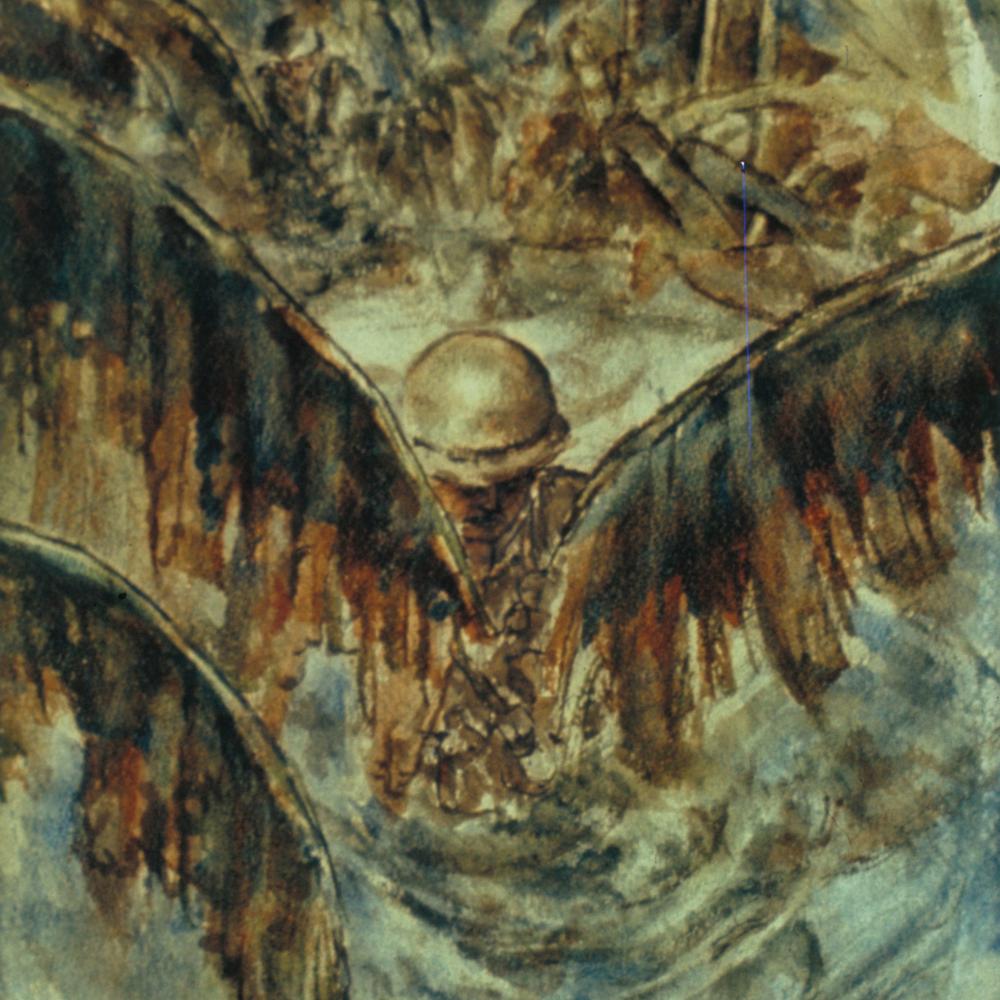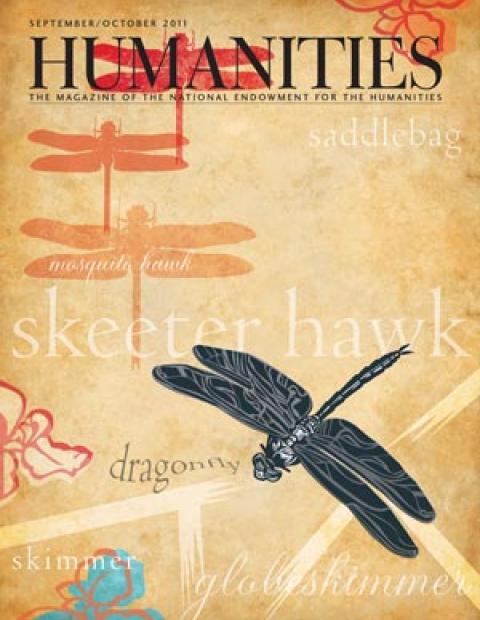Goya's The Disasters of War hauntingly documented the Spanish resistance to Napoleon’s forces. Mathew Brady’s photographs of the Civil War exposed gruesome battlefields. German painter Otto Dix reproduced the nightmare of World War I in works so disturbing they were banned from exhibition and destroyed by the Nazis.
James Pollock understands art’s power to change our perception of war. He was one of forty-six U.S. Army soldiers commissioned to create battle art in Vietnam between 1966 and 1970. Nine teams of five or six men were selected from the rank and file to serve their country by chronicling the war as part of the Vietnam Combat Art Program.
A South Dakota native, Pollock was twenty-two years old and serving as an army postal worker in Korea when he applied for the position. His colleagues questioned his sanity for volunteering to enter a war zone, but he had always wanted to be a professional artist. Having studied art in college, he was among other unknown artists who were chosen for the program through a rigorous selection process. A few, like Auggie Acuna, were self-taught. “I didn’t tell my other team members that I had never had any formal art instruction, especially since I was a team leader. I just looked over their shoulders a lot and learned how to work with all types of media.”
The program was an experiment, says Pollock. “This idea of using young soldiers on a rotating basis was kind of a risk because they didn’t know what they were going to get. What they got was a sort of modernization of war art and a different perspective.”
The artists went on patrol, marched with infantry, and sometimes came under attack. Instead of artillery, they carried cameras, pencils, sketch pads, watercolors—tools to make quick visual notes. They had open travel orders to go anywhere in the theater. Unlike today’s embedded journalists, combat artists could roam from place to place as they liked. After sixty-day stints in the war zone, they shipped to studios in Hawai’i, for seventy-five days, to finish and exhibit their works. Their art became the property of the U.S. Army Art Collection at the U.S. Army Center of Military History.
One of Pollock’s best-known paintings from this time is the watercolor Looking Down the Trail, which shows soldiers wading chest high through a jungle swamp. Pollock remembers the incident well. “When I got out of the water, the other soldiers said I had better take off my boots and look myself over. My legs were covered with leeches.”
By sharing the ordinary soldier’s experiences, the combat artist learned to draw from the perspective of the ordinary soldier. In an article Pollock published in War, Literature & the Arts in 2009, he wrote: “If the unit was on patrol, tramping through rice paddies and jungle, that is what we did. If they were handing out soap to Vietnamese locals, that is what we did.”
Some incidents, though striking and memorable, did not suggest themselves as art. Pollock and his colleagues once hitched a ride home on a helicopter which was said to have “room for live bodies.” On board, they huddled close in silence, surrounded by piles of leaking body bags.
“As a military artist, I was allowed a great deal of creative freedom,” says fellow artist Phil Garner. Pollock says that sometimes he is asked, “‘Were we propaganda machines for the army?’ Absolutely not, I was drafted and didn’t even want to be in the army. If there was any censorship, it would be in what the army chooses to exhibit.”
Now Pollock works as a professional artist doing mostly landscapes, specifically plein air painting. But he brings his time as a combat artist to life for today’s audiences in presentations through the South Dakota Humanities Council. He gave his first talk on the subject in Washington, D.C., in 2003, at the Veterans Forum at the Library of Congress. Through art, “you increase the historical vocabulary surrounding this thing called war,” explains Pollock. “One of the jobs of the artist is to get past the surface, to get to the emotional content of the experience.”


